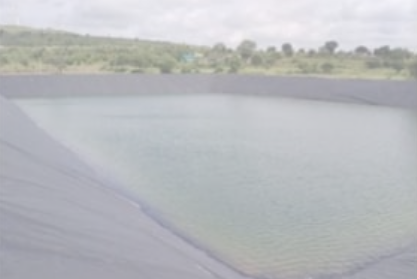The Practice of Green Fish farming: HDPE (High-Density Polyethylene) Pond liner
Within the world of aquaculture and fishing industries, the cornerstone of a prosperous fish farming venture lies in efficient pond management. A essential aspect in this equation is the High-Density Polyethylene fish pond liner, a reliable and environmentally friendly choice for building and sustaining fish ponds. Comprehending HDPE Fish Pond Liners HDPE fish pond liners are designed from HDPE, a artificial thermoplastic compound renowned for its remarkable sturdiness, resilience, and defense against environmental conditions. These liners are specially designed to create a leak-proof shield within fish ponds, ensuring water conservation and preventing escape or leak-through.

Key Attributes of HDPE Fish Pond Liners Durability: HDPE fish pond liners are known for their robustness and endurance against severe environmental factors, like UV exposure, extreme temperatures, and the ordinary wear and tear associated with fish farming. Versatility: These liners are highly flexible and can mold to the shape and contours of the pond, providing a secure and cozy fit. Chemical Resistance: HDPE liners are impervious to numerous chemicals, including those used in aquaculture for water treatment and pathogen management, maintaining the integrity of the liner. Low Maintenance: HDPE fish pond liners demand very little upkeep, enhancing economic efficiency and ease of pond management. Applications of HDPE Fish Pond Liners HDPE fish pond liners act as the base for a wide range of aquaculture applications. Here are some typical uses: Aquaculture: HDPE liners are essential for creating and covering fish ponds, providing water retention and stopping soil contamination. Shrimp Farming: These liners are also used in shrimp farming to form and sustain ponds for shrimp cultivation. Breeding Facilities: In fish and shrimp hatcheries, HDPE liners are employed in tanks and channels for rearing and breeding activities. Aquaculture Research: Plastic pond liners play a role in aquaculture research facilities that require controlled settings for research purposes. Pros of Employing HDPE Fish Pond Liners Water Conservation: Plastic pond liners establish a trustworthy barrier that prevents water seepage, keeping constant water levels in aquaculture ponds. This is essential to the vitality and expansion of fish and aquatic animals. Durability: These liners are built to last, resisting the challenges of aquatic farming processes and ecological influences for a long period. Sanitary Security: HDPE liners help maintain a hygienic and regulated setting within fish tanks, decreasing the likelihood of infection spread and impurity. Eco-Friendliness: High-Density Polyethylene is an environmentally friendly substance that keeps dangerous chemicals out of the water, ensuring it is safe for marine life and the adjacent habitat. Conclusion High-Density Polyethylene pond liners serve a crucial function for successful aquaculture and fisheries through offering a long-lasting, adaptable, and environmentally friendly option for managing ponds. For more details about bat hdpe go this net page